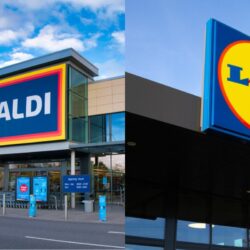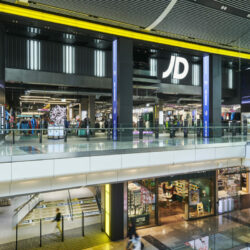Cash transactions decreased 10 per cent last year compared with a year earlier as consumers embraced alternative ways to shop using new technology, data released today reveals.
According to the British Retail Consortium‘s (BRC) Cost of Payment Collection Survey, paying with cash remains the most popular choice as 54.4 per cent of transactions are completed in this way, though the pressure group noted that “fundamental changes in the UK retail industry as customers embrace new technology and new ways to shop are producing major changes in the relative importance of different payment methods.”
As such, the number of transactions completed using cash has fallen 6.7 per cent while money spent declined 9.7 per cent, the first time since the survey began 13 years ago that both measures have seen a drop.
Credit and charge card use decreased by 3.4 per cent as a percentage of transactions though debit card use has grown 3.2 per cent, seeing a major increase in activity as customers favour this method over credit cards to try to manage their finances, while PayPal has become increasingly popular as online shopping continues to grow.
“New ways to pay and new ways to shop are shaping the retail landscape like never before,” explained BRC Director General Helen Dickinson.
“Changing customer preferences are driving the increase in debit card use – they‘re helping people to manage their money better and are a natural fit for online shopping and self-service checkouts.
“Cash is still the most popular way to pay, but our survey shows how rapidly alternative and emerging methods are gaining ground, with growth more than doubling on the previous year, albeit from a low base.
“These methods will be the ‘ones to watch‘ in the future, and retailers are investing heavily to make sure their customers have choice and convenience in ways to pay, whether in-store, at home or on the move.”
Covering nearly 10 billion retail payments in 2012, the survey also revealed that use of alternative payments such as discount coupons and online payments have increased, now accounting for five per cent of all transactions over the year.
Although the pace of change in the way consumers purchase products is accelerating, banks continue to charge retailers “unjustifiably high” sums for handling card payments with the average cost to the retailer being 25 times higher than for handling cash.
While credit and charge cards account for 10.6 per cent of total transactions, these represent 50.1 per cent of costs as the total cost associated with such cards rose seven per cent over the year despite use falling compared with a year earlier.
Dickinson commented: “Against a backdrop of greater retail efficiency and innovation, the one jarring note is that charges remain disproportionately high.
“They continue to rise even though credit card use has fallen. It beggars belief that retailers incur average charges of 38p per credit and charge card transaction, 25 times more than for cash.
“Retailers have been arguing this in court for more than a decade now, and a resolution to the case is long overdue.
“The right conclusion would reduce these excessive costs for retailers and support their ability to invest and innovate.”

















